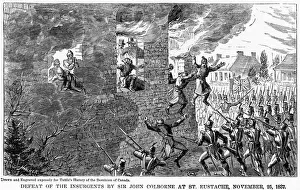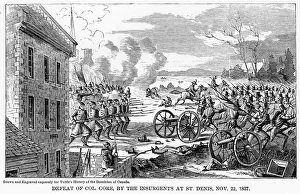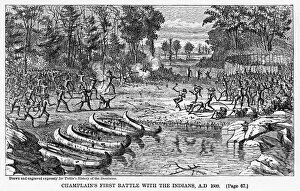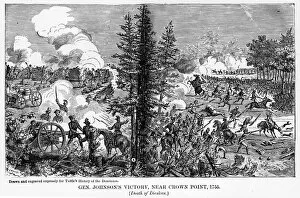Charles Richard Tuttle Collection
Charles Richard Tuttle was a historian and writer who dedicated his life to documenting and preserving the rich tapestry of Canadian history
All Professionally Made to Order for Quick Shipping
Charles Richard Tuttle was a historian and writer who dedicated his life to documenting and preserving the rich tapestry of Canadian history. Through his extensive research, he unearthed stories of pivotal moments that shaped the nation's identity. One such event was the defeat of the insurgents by Sir John Colborne at St Eustache on November 25th, 1837. Tuttle delved into the details, meticulously chronicling how Colborne's strategic prowess led to this significant victory. Another captivating tale Tuttle explored was the defeat of Colonel Gore by the insurgents at St Denis on November 22nd, 1837. His vivid descriptions painted a picture of intense conflict and showcased how these events influenced Canada's path towards independence. Tuttle also shed light on historical figures like General Brock, whose death during the Battle of Queenston Heights on October 13th, 1812 left an indelible mark on Canadian history. Through his meticulous research, Tuttle brought this brave leader back to life for future generations to admire. The attack on Quebec by General Montgomery in December 1755 was another chapter that fascinated Tuttle. He skillfully narrated this daring assault which took place under cover of darkness and highlighted its significance in shaping Canada's destiny. Tuttle didn't stop there; he examined other crucial battles such as The Plains of Abraham in September 1759 and The Battle of St Foye in April 1760. By providing detailed accounts with historical accuracy, he transported readers back to those tumultuous times when nations clashed for supremacy. Moreover, Tuttle explored lesser-known events like The Evacuation of Fort Duquesne in 1758 or The Capture of Fort Frontenac during that same year. These episodes unveiled hidden aspects often overlooked but essential for understanding Canada's complex past. General Wolfe's heroic actions during The Siege of Louisbourg in AD 1758 were also immortalized through Tuttle's meticulous research.




















